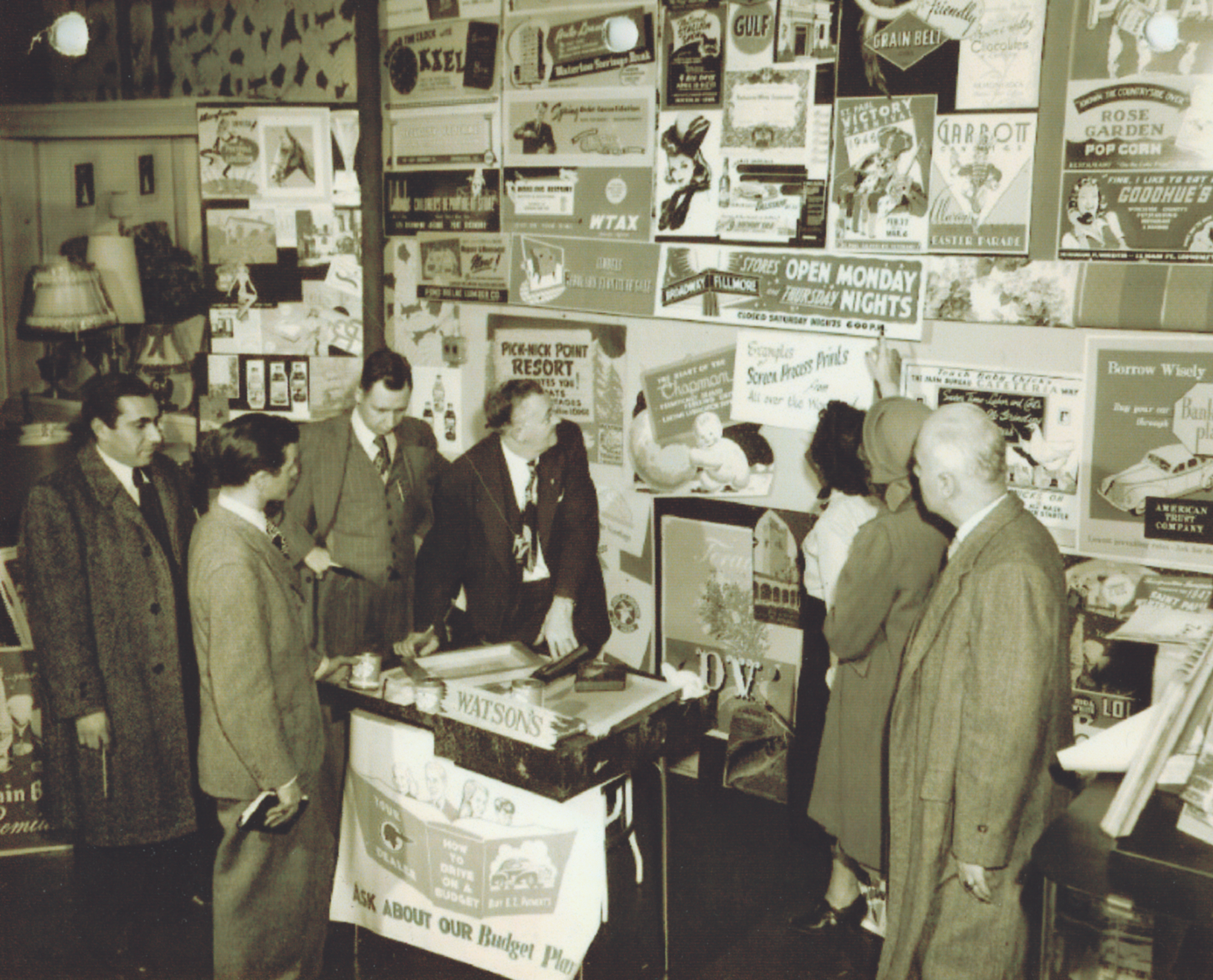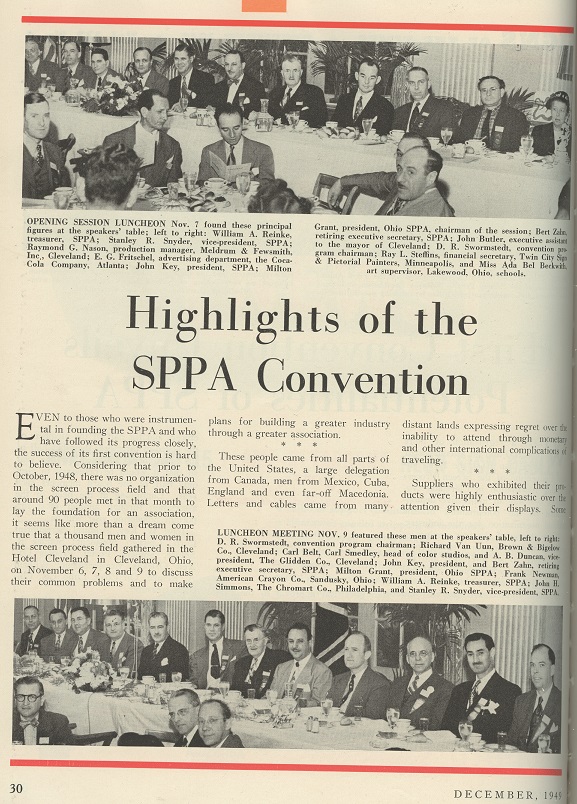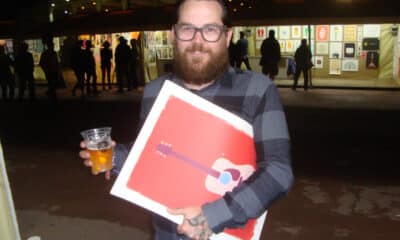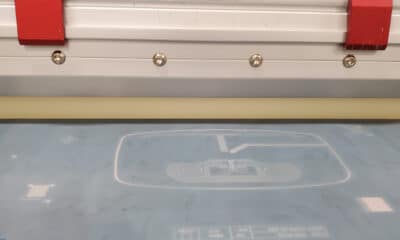JUST AS PRINTING has transformed itself, so goes our little silkscreen show. From 1949 on, this convention was about innovators: men and women who got enthused about printing in a whole new way, spawning industries far beyond the narrow confines of regular print shops and newspapers. The SGIA Expo has continued to be about bringing innovators together, as digital processing and printing joined the party and turned our cities and buildings and vehicles into immense, multicolored canvases. Garment and fabric decoration exploded – “no square foot of cloth shall go unprinted or unbranded” is a universal mantra these days. And screen printing somehow never seems to go away. Just when one pioneered business area gets taken over by digital technology, two or three more innovative applications are discovered, and bingo, you have consumer electronics, cell phones, solar cells, or some other little niche market that needs our process to exist. We ain’t dead – we’re different. Again.

Printing United is finally here, and by the time you’re reading this, you might be walking the show floor.The more worldly readers will recognize the concept – kind of a mini drupa. And it’s not a bad thing. Ford Bowers and the SGIA brain trust like to call it convergence. Some would call it an opportunity to expand into new areas. Others called it quits. You can call it what you want. I call it messin’ with the squeeg.
Kidding. But 70 years on, it should make screen printers proud, a bit like a parent or grandparent watching their kids grow and start their own print families. Think of Printing United as a Thanksgiving dinner, with a whole bunch of in-laws from the Offsets and the Packer families showing up for the first time. “Could you pass the press wash? Would you like some more ink? We’ve got fabric, water based, digital, UV, offset, conductive, and more…”
The future is on display in Dallas, spread over a number of rooms loosely organized into industry sectors. This is printing 2019. What better time to get the so-called specialty side of printing – our core processes being screen and digital – together with the larger-but-on-a-serious-diet offset and packaging printers. Their traditional markets have shrunk as the demand for legacy offset printed products – newspapers, magazines, books, and business forms – has dropped. At the same time, people and companies producing wide-format digital print displays, wraps, and signage, garment printing, industrial/functional products, and packaging are growing, here and around the world. The internet of things needs interfaces, clothing is becoming electronically active, and print – all print – carries us forward.

The convention has always been a place where we gather to look at new machines, processes, and materials, to learn new methods, and to see old friends and make new ones. I read some coverage of the first SPPA convention (Screen Process Printing Association, the original group that morphed into SGIA), and this is pretty close to the same script. The dates have changed, the people have changed, printing has changed, but the core idea – getting together with fellow printers, getting over the secrecy that hinders advancement of the overall industry, and, above all, education – is still relevant in the age of webinars and 10-minute YouTube videos that make you an expert in your own mind.
Advertisement
The unique thing is instead of screen and digital heading to Chicago or Orlando to some offset printing convention, they’re coming to us. And with a rethink of the get-it-cheap-from-China mentality that has twisted the world economy, it’s more important than ever for local manufacturers to step up their game, especially in electronics, medical, packaging, and emerging alternative energy systems and products.
If we can truly unite with the broader printing industry, we can form a common voice to tell our story to government, the education system, and the general public. What’s the story? And why is that important?
There is way more to print than words and pictures on paper. We’re part of a manufacturing process comprised of segments that people within the industry don’t even know about. And we’re a keystone industry; If you want any kind of manufacturing happening in North America, printers will be intersecting the supply chain more than once. We are makers. We work with designers and artists to turn imagination and ideas into real tangible products.
Here’s the rub. If we don’t know what all the uses and products made by print encompasses, then how the hell will the government or the public? When the US Department of Labor writes your industry off as statistically irrelevant, when those ever-so-polite-and-inclusive Canadians don’t include printing as a trade, we have a problem.
We need young, skilled, enthusiastic people coming into this industry if it’s going to continue to grow and supply the public with locally made products, future products, and the hardware of a digital world. We can’t attract people if they don’t know printing and all the allied jobs that exist as a career path. As presses and processes become more sophisticated, it will take education and new skills to run them profitably.
It starts with you. Don’t be afraid to walk the floor, stick your nose in a booth, or take a seminar on something you know nothing about.
Advertisement

 Case Studies2 months ago
Case Studies2 months ago
 Art, Ad, or Alchemy2 months ago
Art, Ad, or Alchemy2 months ago
 Andy MacDougall2 months ago
Andy MacDougall2 months ago
 Columns3 weeks ago
Columns3 weeks ago
 Editor's Note3 weeks ago
Editor's Note3 weeks ago
 Marshall Atkinson3 weeks ago
Marshall Atkinson3 weeks ago
 Thomas Trimingham2 months ago
Thomas Trimingham2 months ago
 News & Trends2 months ago
News & Trends2 months ago

















